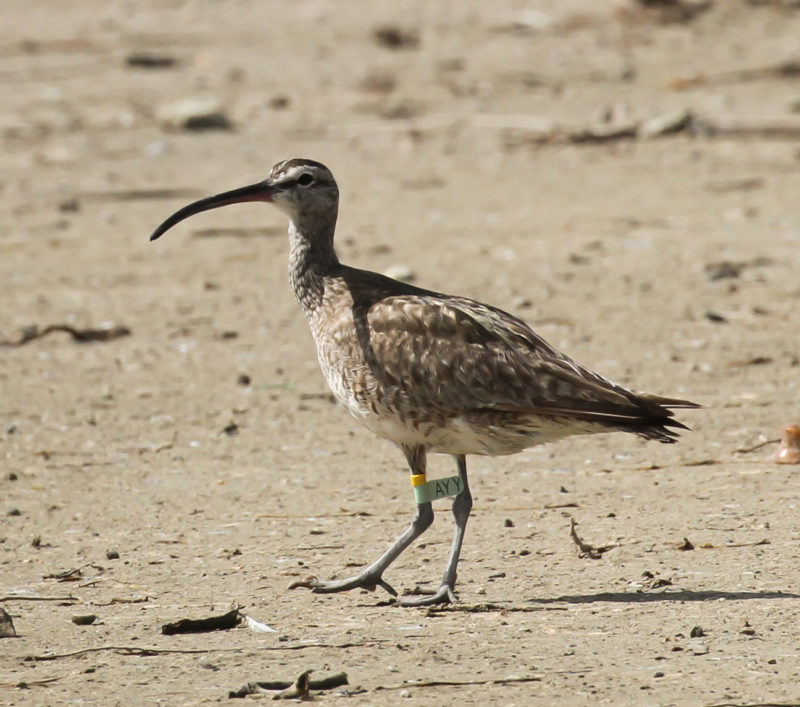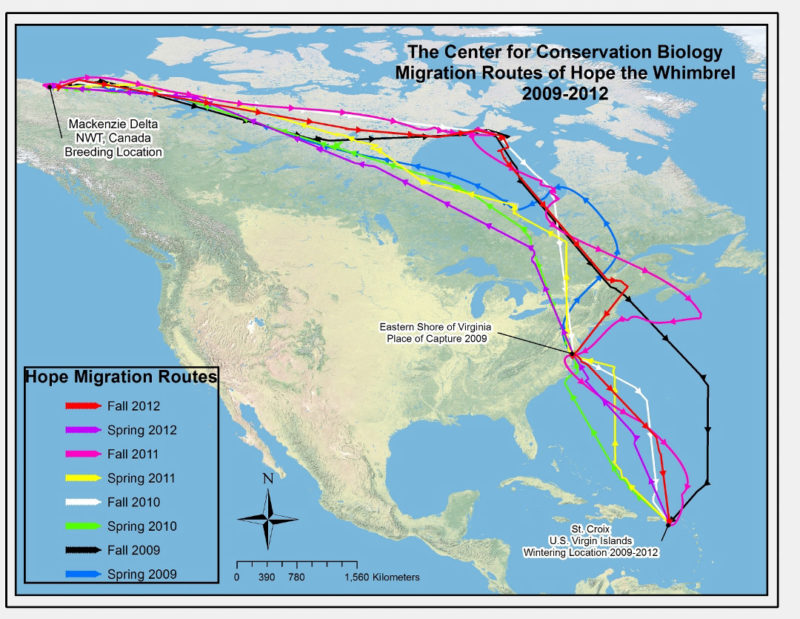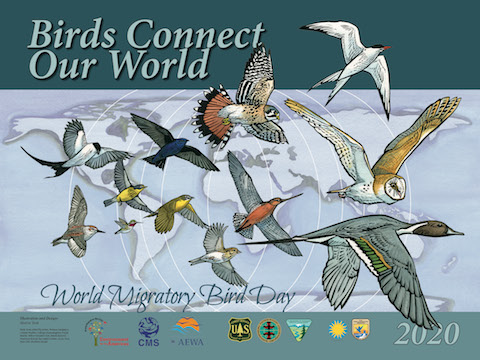By Susan Bonfield
Director, Environment for the Americas
In 2009, scientists captured a Whimbrel in coastal Virginia, an important stopover site for the species. When the bird, a female nicknamed Hope, was released, she carried a satellite transmitter that provided details about her future travels. Shuttling between breeding grounds in northwestern Canada and a wintering site in the Virgin Islands, Hope demonstrated both the spectacular journeys that migratory birds make each year and the threats they face.

Photo by Lisa Yntema/The Center for Conservation Biology - Hope in August 2017 after arriving at Great Pond, just a few weeks before the arrival of two hurricanes.
In 2020, World Migratory Bird Day launches its annual conservation campaign with the slogan “Birds Connect Our World.” Throughout the year, we will focus on the tracking technologies researchers use not only to learn about migratory routes but also to examine the hazards along these routes and to implement conservation actions that help migratory birds throughout their journeys. “Birds Connect Our World” will be celebrated across the globe, including in every Bird City community in Wisconsin, and plans already are underway to launch the event through meetings and festivals, school programs, and presentations.
In the Western Hemisphere, World Migratory Bird Day is spearheaded by Environment for the Americas, a Colorado-based non-profit organization that has been coordinating the program since 2008. Environment for the Americas focuses its efforts on the Americas Flyways, working with more than 700 groups from Canada to Argentina and the Caribbean – including 109 Bird City Wisconsin communities. Through education materials, trainings, social media and connections with program coordinators, World Migratory Bird Day works to raise awareness of migratory birds and to promote actions that protect our feathered travelers.
At the program’s heart is artwork that reflects the conservation theme. Selected through a rigorous, competitive process, artists from Haiti, Cuba, Mexico, the United States, Canada and other countries have portrayed issues ranging from the impacts of climate change to the benefits of shade coffee. The final images feature the species that reflect these topics.
In 2020, self-taught printmaker and compulsive wanderer of landscapes Sherrie York is developing the design that will be used to highlight “Birds Connect Our World.” Using linocut blocks, she has created portraits of 12 focal bird species: Northern Pintail, American Kestrel, Barn Owl, Western Sandpiper, Bar-tailed Godwit, Arctic Tern, Purple Martin, Calliope Hummingbird, Fork-tailed Flycatcher, Canada Warbler, Yellow-breasted Chat and Baird’s Sparrow. Each represents a different method of tracking birds, including banding, geolocators, feather analysis and citizen science. Throughout the year, we will highlight these species, the tracking methods and communities on the ground that are working to make their journeys safer.
Which brings us back to Hope. The Whimbrel was tracked over more than 50,000 miles but disappeared in 2017, when Hurricane Maria struck St. Croix in the Virgin Islands.

Migration Routes of Hope the Whimbrel 2009-2012
Increasingly intense storms like Maria, pane-glass windows, loss of habitat, free-ranging cats and plastic pollution are just a few of the factors that World Migratory Bird Day will tackle in 2020. We invite all Bird Cities to join our growing network of activities in 2020.
You can learn about Environment for the Americas at www.environmentamericas.org and about World Migratory Bird Day in the Americas at www.migratorybirdday.org. The Bird Day site provides information about this year’s theme, downloadable educational and promotional materials, and a way to register your World Migratory Bird Day event on our global map. For more information, write to info@environmentamericas.org


